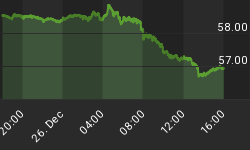
We get it, the reader has a busy life, how can the reader maintain a stock portfolio keep up with chart patterns and avoid the noise that so rounds the stock market to remain profitable. Simply we say understand a little about point and figure charts are you will be yards ahead of the crowd.
Why use Point and Figure Charts?
Your stock went up $1.00 on Monday and continued down $.63 on Tuesday. It went back up $1.40 on Wednesday while falling down $.30 on Thursday. When you take a look at the intraday charts you see something frustrating and erratic. No price at which to sell is clear. If only there were a method to eliminate some of the noise perhaps the stock trend would be somewhat clearer. For this, many turn to point and figure charting, because it aids in reducing noise and elucidating market tendencies. Point and figure charting displays the interplay between these two fundamental forces of the marketplace, while at the same time not tracking relatively insignificant changes.
Point and Figure Calculation
Point & Figure charts display an "X" when prices rise by the "box size" (a value you specify) and display an "O" when prices fall by the box size. Note that no Xs or Os are drawn if prices rise or fall by an amount that is less than the box size.
Each column can contain either Xs or Os, but never both. In order to change columns (e.g., from an X column to an O column), prices must reverse by the "reversal amount" (another value you specify) multiplied by the box size. For example, if the box size is three points and the reversal amount is two boxes, then prices must reverse direction six points (three multiplied by two) in order to change columns. If you are in a column of Xs, the price must fall six points to change to a column of Os. If you are in a column of Os, the price must rise six points to change to a column of Xs.
The changing of columns identifies a change in the trend of prices. When a new column of Xs appears, it shows that prices are rallying higher. When a new column of Os appears, it shows that prices are moving lower. Because prices must reverse direction by the reversal amount, the minimum number of Xs or Os that can appear in a column is equal to the "reversal amount."
Supply and Demand with Point and Figure Charts
Point & Figure charts display the underlying supply and demand of prices. A column of Xs (Blue) shows that demand is exceeding supply (a rally); a column of Os (Red) shows that supply is exceeding demand (a decline); and a series of short columns shows that supply and demand are relatively equal. Whichever resides in the row furthest to the right has control of the marketplace at the moment. When supply outpaces demand, price falls. When demand outpaces supply prices rise.
Wyckoff Mark Up and Mark Down Phases
As stated above, when either the blue Os or the red Xs dominate you will have demand or supply in control, and thus as mark up or mark down phase present. If the supply and demand point and figure pattern is inconclusive you will no doubt have either (re) accumulation or (re) distribution present. Use of the 45 degree trendline in point and figure charts also aids the Wyckoff Student as to overall trend of the stock.

















